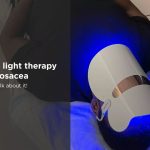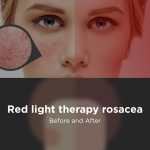“Stop Manually Breathing An automatic, involuntary process that keeps us alive, often taken for granted.“
Breathing is a fundamental aspect of human life, an involuntary process that sustains us from birth. Our bodies are programmed to breathe automatically, allowing us to focus on other tasks without conscious effort.
However, have you ever found yourself fixating on your breathing, feeling the need to control each inhalation and exhalation manually? This phenomenon, known as “manual breathing,” can be both distracting and distressing.
Hy, we are anam cara. In this blog post, we will explore the concept of manual breathing, understand why it occurs, and learn techniques to release ourselves from its grip, thereby reclaiming the bliss of natural, automatic breathing.
What Is Manually Breathing?
“Manually breathing” refers to the conscious act of taking control over one’s own breathing pattern, as opposed to the automatic, subconscious process that occurs without deliberate thought.
When someone mentions “manually breathing,” it often prompts individuals to focus on their breath and take deliberate inhalations and exhalations. This awareness of breathing can create a temporary shift in attention and consciousness.
While breathing usually occurs involuntarily, intentionally engaging in manual breathing can be a helpful technique in relaxation exercises, mindfulness practices, or when seeking to alleviate stress or anxiety.
Types Of Manual Breathing

While breathing is an automatic bodily function, individuals can temporarily take control of their breath, altering its pace and depth. Here are a few types of manual breathing techniques:
- Deep Breathing: In this technique, one takes slow, deep breaths, focusing on expanding the diaphragm and filling the lungs completely. It promotes relaxation, reduces stress, and increases oxygen intake.
- Box Breathing: Box breathing involves inhaling deeply for a count of four, holding the breath for four counts, exhaling for four counts, and holding again for four counts. This method aids in calming the mind, improving focus, and reducing anxiety.
- Alternate Nostril Breathing: By closing one nostril at a time and breathing in and out through the other, this technique balances energy in the body, calms the mind, and enhances overall well-being.
- Breath Retention: Also known as “pranayama,” breath retention involves holding the breath after inhaling or exhaling for a specific duration. It helps regulate the flow of energy and can be combined with meditation or yoga practices.
Remember, manual breathing techniques can be helpful for relaxation, stress management, and overall well-being, but it’s important to return to automatic breathing afterward.
Benefits of Stopping Manual Breathing
While breathing is typically an unconscious process, voluntarily focusing on it can lead to increased awareness and potential anxiety or discomfort. Therefore, there are several benefits to stopping manual breathing.
- Relaxation: Allowing your body to regulate breathing naturally can induce a state of relaxation, reducing stress and promoting a sense of calm.
- Improved focus: By redirecting attention away from breathing, you can concentrate more effectively on tasks or activities that require cognitive engagement.
- Enhanced sleep: When we stop consciously controlling our breath, it can facilitate a smoother transition into sleep, allowing for more restful and uninterrupted slumber.
- Increased energy: Manual breathing can be mentally and physically exhausting. Letting go of conscious control frees up energy for other activities and prevents fatigue.
- Mind-body harmony: Allowing the body’s automatic systems to function without interference can foster a greater sense of harmony between the mind and body.
What happens when you manually stop breathing?
When you manually stop breathing, you are deliberately preventing the intake of oxygen and the expulsion of carbon dioxide from your body. This action triggers a series of physiological responses. Initially, the oxygen levels in your bloodstream begin to drop, leading to hypoxia.
As oxygen deprivation continues, the brain’s respiratory centers detect the increasing levels of carbon dioxide, causing a buildup of acidity in the blood. This prompts the body to initiate an involuntary gasp reflex, attempting to restore the oxygen supply.
If breathing is not resumed, the lack of oxygen can result in loss of consciousness, brain damage, and ultimately, death. Therefore, intentionally stopping breathing is extremely dangerous and should never be attempted.
Reasons Why Do You Need To Stop Manually Breathing?
There are no reasons why you need to stop manually breathing. Breathing is an involuntary process controlled by the autonomic nervous system, specifically the medulla oblongata in the brainstem. It ensures the continuous supply of oxygen to the body and the removal of carbon dioxide. Trying to consciously control your breath can lead to discomfort, and anxiety, and disrupt the body’s natural rhythm.
However, in certain situations like meditation or relaxation exercises, focusing on breathing patterns can help in promoting calmness and reducing stress. But in general, it is best to let your body breathe naturally without conscious interference.
How To Stop Manually Breathing?
To stop consciously controlling your breath and return to automatic breathing, you can try the following techniques:
- Awareness: Recognize that your body has an innate ability to breathe without conscious effort. Trust that your automatic breathing system will continue to function even without your conscious control.
- Distraction: Engage your mind in activities that divert your attention away from your breathing. Read a book, watch a movie, or engage in any task that captivates your focus.
- Meditation: Practice mindfulness or meditation techniques to cultivate a state of relaxation and detachment. By observing your breath without trying to control it, you can allow your body to resume automatic breathing.
- Physical activity: Engage in exercise or physical exertion that demands your attention. This not only distracts your mind but also prompts your body to naturally regulate your breathing.
Remember, consciously controlling your breath for extended periods can cause discomfort and anxiety. Trust your body’s natural instincts and allow it to breathe effortlessly.
Why does my breathing become manual?
The sensation of manual breathing, also known as the awareness of one’s own breathing, can occur due to various factors. It is often a result of heightened focus or anxiety, where attention becomes fixated on the normally involuntary act of breathing. This can lead to a conscious effort to control and regulate one’s breath. Additionally, external stimuli such as discussions about breathing or reading about it can trigger this sensation.
Although temporary and harmless, it can be bothersome. Relaxation techniques, distraction, or engaging in activities can help alleviate this heightened awareness of breathing.
How do I stop thinking about breathing?

To stop thinking about breathing, you can try the following techniques:
- Distraction: Engage your mind in other activities that require concentration. It could be reading a book, solving puzzles, playing a musical instrument, or engaging in any hobby you enjoy. By redirecting your attention, you can shift focus away from your breath.
- Mindfulness meditation: Paradoxically, practicing mindfulness can help you stop thinking about breathing. Instead of trying to suppress the thought, acknowledge it without judgment and gently redirect your attention to the present moment. Focus on the sensations in your body, sounds around you, or any other object of attention. By doing so, your mind becomes less fixated on breathing.
- Breathing exercises: Ironically, engaging in deliberate breathing exercises can help you stop obsessing over your breath. Techniques like deep breathing, box breathing, or alternate nostril breathing can regulate your breathing pattern and help you feel more in control. By consciously controlling your breath, you may find it easier to let go of anxious thoughts about breathing.
- Engage in physical activity: Physical exercise not only distracts your mind but also naturally regulates your breathing. Engaging in activities like jogging, dancing, or swimming can help you focus on the movements of your body rather than the act of breathing itself. The rhythmic nature of exercise can provide a sense of relaxation and relief from obsessive thoughts.
- Seek professional help: If persistent thoughts about breathing significantly disrupt your daily life or cause distress, consider reaching out to a mental health professional. They can provide guidance, and support, and potentially diagnose any underlying conditions such as anxiety or obsessive-compulsive disorder that might be contributing to your fixation on breathing.
Remember, these techniques may take time and practice to be effective. Be patient with yourself, and don’t hesitate to seek professional assistance if needed.
How do I stop manual breathing from anxiety?
If you find yourself manually focusing on your breathing due to anxiety, there are several techniques you can try to regain a sense of normalcy.
First, remind yourself that your body knows how to breathe naturally without conscious effort. Trust in your body’s ability to regulate breathing on its own.
Next, shift your attention away from your breath and engage in a distracting activity, such as reading, listening to music, or engaging in a hobby. Deep breathing exercises, like diaphragmatic breathing, can also help calm your mind and restore a natural breathing pattern.
Finally, practice relaxation techniques, such as mindfulness or progressive muscle relaxation, to reduce overall anxiety levels. Remember that breaking the cycle of manual breathing may take time and practice, so be patient with yourself.
How much can a person stop breathing?
A person cannot stop breathing completely for an extended period of time without severe consequences. Breathing is a vital function that supplies oxygen to our body and removes carbon dioxide.
The brain requires a continuous supply of oxygen to function properly, and without it, brain cells begin to die within minutes.
However, there are certain techniques, such as holding one’s breath, that temporarily interrupt the breathing process. With practice, some individuals can hold their breath for several minutes, but this should always be done with caution and in a safe environment.
Prolonged cessation of breathing can lead to loss of consciousness, brain damage, and even death. It is crucial to prioritize the health and well-being of the respiratory system by maintaining regular, uninterrupted breathing.
In conclusion
deliberately stopping or controlling one’s breathing manually is not recommended. Breathing is an automatic and vital bodily function that should not be consciously interrupted.
Attempting to do so can lead to imbalances in oxygen and carbon dioxide levels, resulting in hyperventilation, dizziness, and potential loss of consciousness. The human body has a sophisticated respiratory system that naturally maintains the necessary oxygen-carbon dioxide equilibrium.
Instead of trying to stop breathing manually, it is essential to trust in the body’s inherent ability to regulate breathing. If you experience concerns or anxiety related to breathing, seeking professional medical or psychological help is advised to address any underlying issues and learn appropriate coping strategies.







1 thought on “How to stop breathing manually”